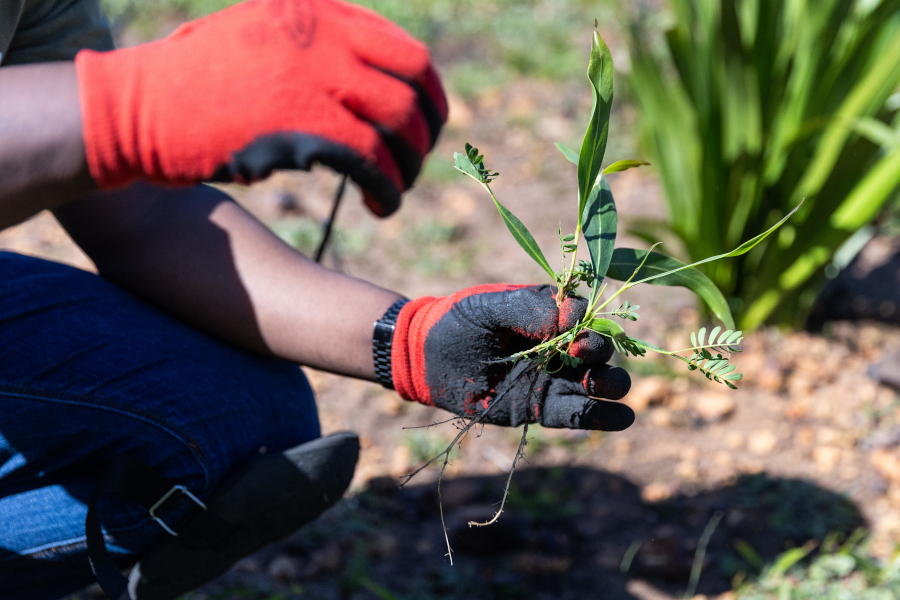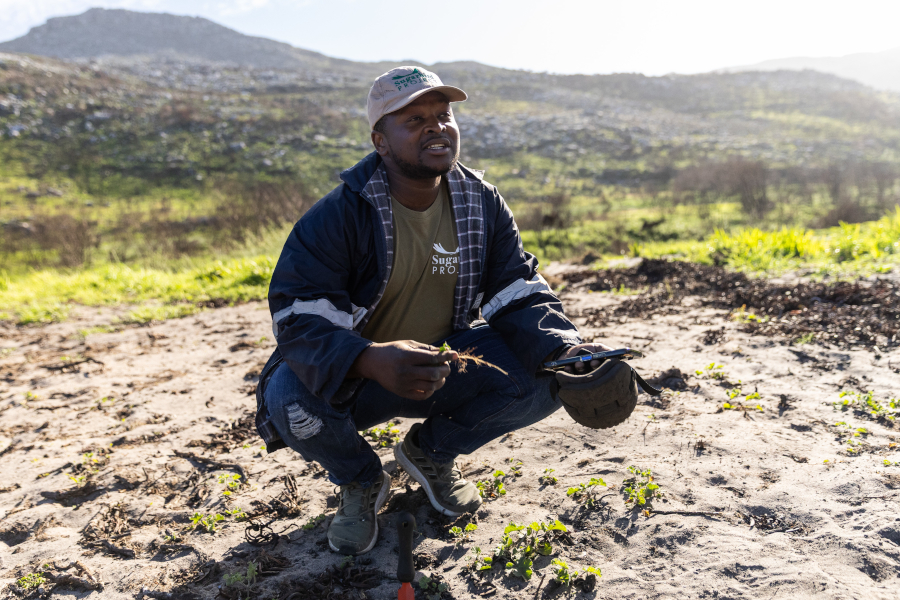Aliens are easier to remove, but the window is small
By Liezl Human/GroundUp
“Alien plants are relentless, but we are relentless as well,” says Raymond Chinembiri, team leader at the Sugarbird Project, an organisation dedicated to removing invasive plants in the Table Mountain National Park (TMNP).
After a wildfire swept through Silvermine in April this year, burning about 3,000 hectares, millions of invasive plants have sprouted, trying to outcompete the indigenous fynbos.
SANParks saw this as a rare opportunity to remove the seedlings before they become a bigger problem.
“The fire will cause about 90% of the invasive seed bank to germinate, creating a critical window of opportunity to clear it by hand-pulling the saplings while they are still small and the ground still soft – before they take hold again,” the Sugarbird Project said in its annual report.
About ten teams from the Sugarbird Project, with help from NCC Environmental Services and public volunteers, moved in quickly to start removing the seedlings. Millions of tiny Port Jackson seedlings have since been removed from the Silvermine Valley.
Taking us through the area, Chinembiri pointed out where fynbos seedlings were growing in places where invasive plants had recently been cleared. “You can see the difference,” he said, adding that seeing the fynbos regrow is a source of motivation for the teams.
Several teams were hard at work pulling seedlings, hacking at invasive stems, and judiciously applying herbicide.
“Port Jackson is a difficult plant to deal with. Even though one is burnt up, the root system might still be alive,” Chinembiri explained, pointing out a burnt Port Jackson stem with leaves already regrowing from the base of the stump. “Once they grow big, they are more difficult to deal with,” he said.
There is still a long way to go for the Sugarbird teams. According to their recent annual report, they’ve tackled 3,300 hectares (allocated to Sugarbird by SANParks), including areas such as Signal Hill, Lion’s Head, Newlands Forest, Cecilia, Kirstenbosch, and others.
They have about 12 teams working on clearing the alien plants, nearly all of them in TMNP, and one in Hermanus.
Chinembiri said their mission is to ensure “indigenous plants which have been outcompeted with alien plants are given another chance to flourish”.

Invasive alien plants are one of the biggest threats to biodiversity in the Cape floral kingdom. Many fynbos species are endangered and at risk of going extinct because of invasive species.
Maya Naumann, one of the founders of Sugarbird, said they have a good working relationship with SANParks, which manages the park and has given them permits to access the areas they work in.
Several people have also joined volunteer days to pull seedlings. These happen every Saturday and are open to the public to join.
“It’s such a big problem,” said Naumann. You need a lot of volunteers, people organising labour, and SANParks working together to tackle the problem.
The organisation gets its funding through donations.
Chinembiri said the teams have been trained by specialists and botanists to know what to look out for and identify plants.
Sugarbird team member Unathi Tshingana said he loves spending most of his working hours in the mountains. His knowledge of conservation has “grown”, he said.
“I know most of the alien plants now. Every day, every month, you come across new plants,” he said.
But working in the mountains can be dangerous, with steep terrain and snakes. “But they said they are non-venomous,” he laughs.
For Chinembiri, removing invasive plants protects natural heritage. “We are trying to restore biodiversity to make sure the indigenous plants, the fynbos … get another chance. It’s for the benefit of the future generations, so they can see the beauty of our nature,” he said.
